Download the SEO ROI Guide PDF


53% of all website traffic comes from organic search, and 60% of all B2B SaaS marketers stated that SEO generated more leads than any other marketing initiative. Multi-billion dollar businesses like NerdWallet were grown almost entirely on SEO alone, yet it accounts for such a small percentage of most businesses' overall marketing spend, and for one reason, predictability.
Most businesses feel comfortable investing so much into paid advertising because they have a very good understanding of exactly what they can expect to get back given the budget they put in. Less companies are comfortable investing what they should in SEO because it’s more nebulous and hard to pin down a direct ROI for SEO work. We want to change that.
We want to demystify this problem because tracking and understanding your SEO ROI is critical for the efficient management of your marketing budget. In this guide, we’ll take a deep dive into SEO ROI.
Let’s optimize your marketing spend like never before. To start things off though let's explain what SEO ROI is.
Chapter 1
SEO ROI stands for search engine optimization return on investment. This can be defined as a measure of the profitability or marketing results generated from the marketing budget a company invests in efforts to improve search engine rankings. Let's break this down even further.

Search engine optimization is a set of marketing strategies and tactics designed to improve the rankings of websites and web pages on target keywords and related topics. SEO aims to achieve several key objectives:
SEO forms a major component of search engine marketing (SEM). SEM includes SEO as well as paid methods of advertising on search engines, such as pay-per-click (PPC) advertising. To the extent SEO forms a part of your SEM strategy, what will be said here about SEO ROI applies equally to SEM ROI.
Return on investment is a profitability measurement that compares the profit yielded by an investment to the cost associated with the investment. Mathematically, this is expressed as a ratio of profit to cost, converted to a percentage. In the numerator of this ratio, profit can be determined by taking the revenue generated by your investment and subtracting the cost. The result is then divided by cost. Expressed as a formula:
ROI = P/C = [R-C]/C
In this formula, ROI represents return on investment, P represents profit, C represents cost and R represents revenue.
In the present context, the investment under discussion is your marketing investment in SEO. Return on investment can be interpreted either directly as profit or indirectly as marketing results which yield profits, such as increase in search engine ranking on a given keyword.
When applied to SEO, the concept of ROI becomes a key performance indicator that tells you how much in profit or marketing results you gain from each dollar you invest in SEO.
Simplified without an itemized breakdown of components, this can be expressed as a ratio of the profit or results generated by SEO-acquired leads to the cost of acquiring those leads.
This can be determined using the following formula:
![ROI = P/C = [R-C]/C](https://cdn.prod.website-files.com/6437c0a8d27d27753b31c9f7/679b244bb2212ceeeb040fc4_6447fe034d6c834b47f3ca51_61d8ba5bb1e6f858e9a9b7ce_1250755_ROIGuide_BlogImage1_Opt01_010722.avif)
For R, use the revenue or results generated from SEO-acquired leads. For C, use the cost of acquiring SEO leads.
Applied this way, SEO ROI becomes a way to measure the profitability or tangible results of your SEO marketing efforts. It also lends insight into the efficiency of your SEO strategy. The more efficient your SEO, the higher your SEO profits or results will be, and the higher your SEO ROI. Conversely, a low SEO ROI indicates low profitability and points toward strategic inefficiency and waste.
To calculate the ROI of your SEO, you need to decide which metrics you’re going to use to define your SEO results and costs.
The data you need falls into two main categories:
Later in this guide, we’ll break down each of these two categories. Then we’ll look at how SEO calculators can help you automate the process of determining your SEO ROI.
To define the return on your investment, you can use financial SEO metrics, non-financial SEO performance metrics and combinations of the two. Let’s start with the financial side first and then consider how this relates to SEO performance metrics.
In most cases, the purpose of SEO is to generate sales revenue. From a purely financial perspective, you can measure the results of your SEO investment in terms of revenue generated. For example, if a particular content campaign generates $100,000 in sales at a cost of $50,000, you could plug this into the general formula:
![ROI = P/C = [R-C]/C](https://cdn.prod.website-files.com/6437c0a8d27d27753b31c9f7/679b244bb2212ceeeb040fba_6447fe030bd4be40ab26f512_61eecbde622cf8270a07150e_1250755_SEOROI_BlogImage2_Opt02_010722.avif)
This would give you the results:
ROI = ($100,000 - $50,000)/$50,000 = 1
Converted into a percentage, this represents a 100% return on investment.
While this is a very simple and direct approach to measuring SEO ROI, it focuses on your sales bottom line, which gives you a limited amount of information about the specifics of your SEO investment. For example, how many clicks do you need to generate $100,000 in sales, and at what conversion rate?
Which content on which keywords helped generate the necessary clicks? How did your clicks increase as a result of your SEO investment? To answer these types of questions, you need to dig deeper into your SEO ROI by analyzing your financial results in relation to SEO performance metrics.
Chapter 2
Measuring and tracking SEO ROI allows a business to make better, more informed decisions on their marketing spend.

The amount of web traffic coming from organic search rose from 51% in 2014 to 53% in 2019, according to SEO platform provider BrightEdge.
Moreover, SEO generally yields the highest ROI among digital marketing channels. A survey by SEO news site Search Engine Journal found that 49% of respondents reported organic search as returning the highest ROI, putting it well ahead of paid search at 19%, social media at 18% and email at 14%.
Despite the results SEO generates, it often consumes a lower proportion of overall marketing spend than other types of digital marketing. For example, in 2021, a higher percentage of chief marketing officers increased spending on social media advertising than SEO, a survey by technology research firm Gartner found.
There are a number of reasons for this disparity. One is an entrenched mentality that favors paid advertising or the notion that organic traffic is “free” and thus doesn’t need the investment that paid advertising gets. Another is the challenge of measuring the ROI of SEO, which can be difficult to pin down for a number of reasons.
While the general concept of return on investment is clear enough, quantifying results in SEO can seem daunting because of the sheer number of metrics which can be tracked. Results can be measured in terms of:
Deciding which of these variables is relevant to your calculations presents an initial challenge to calculating your SEO ROI.
A potentially frustrating aspect of measuring SEO ROI is the inability to directly control outcomes of SEO investments. You can create content and promote it, but clicking on search engine results is up to Internet users. Even when you get clicks, search engine providers have ultimate control over how your results get ranked. You can influence your results, but you can’t control them directly - not as much as you can with paid advertising.
Because of the number of metrics involved and the inability to control outcomes directly, both growth in SEO results and the cost associated with growth can be challenging to calculate. Your estimates depend on which metrics you’re tracking and what you’re counting as results. Moreover, results accumulate over the long term, so you may not see the fruit of your labor immediately. It takes patience over the long haul to gain an accurate sense of SEO costs.
If you’re working with a marketing agency to do your SEO, your ability to measure your ROI depends on your partner. However, some agencies may be unable to provide relevant data, while others may be unwilling. This can be a result of a number of factors, including lack of prerequisite tracking systems, lack of know-how, laziness or desire to protect information deemed sensitive. Whatever the reason on their end, the result can be a lack of needed data on your end.
Even if you have SEO data available from your own webmaster or your marketing agency, the information available may be insufficient for analytics purposes. This can stem from a number of causes, including failure to track the correct variables, too small of a sample size, too narrow of a date range, or lack of important correlative data.
Moreover, it may not be clear how to interpret the data you have. Without a technical understanding of how to interpret the numbers you have, all you have is raw numbers without any practical application.
To get a better understanding of how to interpret this data and use Google Analytics to define conversion goals, etc. we recommend checking out Google’s own Analytics Academy which does a great job of that.
Despite these challenges, measuring SEO ROI is essential. Tracking your SEO ROI can let you know if the assets you’re building or planning to build are actually giving you the organic growth and conversions your business needs to recoup the costs associated with your investment. Otherwise, you could be wasting your money on marketing campaigns that aren’t yielding results.
Chapter 3
What are the SEO metrics you should track, and how do they impact your businesses bottom line?

For a high level overview, the SEO metrics listed above are the primary metrics every SEO should be aware of and tracking on projects for the highest impact. The impact these metrics have on your bottom line varies dramatically from a massive impact, to no impact at all - but can act as leading indicators to future revenue growth, or inform SEOs to better prioritize their actions.
Let’s dig deeper into what each of these involves.
A primary goal for any SEO campaign is to increase the ranking for the corresponding content page on a target keyword. For the keyword in question, ranking results can be evaluated in terms of questions such as:
The keyword of interest may be the primary keyword for a given page or it may be a secondary keyword mentioned on the page. Keyword rankings may be assessed for different search engines.
Keyword volume measures how often users search for a given keyword phrase over a specified time frame. Knowing this can help you estimate potential traffic which could be generated by improving your ranking on the keyword. This in turn can help you estimate potential revenue which could be generated from traffic on that keyword.
Keyword difficulty measures how much competition you face when trying to rank on a particular target keyword. Knowing the difficulty of a keyword tells you how hard it would be to take the top ranking for that keyword and how much resources you would need to expend to do so. This can help you determine whether to target a given keyword or focus your resources on a less difficult keyword.
Keyword difficulty can be assessed in terms of how many competitors are targeting a keyword, the authority of the competitors targeting that keyword and the quality of the content targeting that keyword.
When assessing keyword difficulty, one measure of difficulty is the Page Authority of other pages currently ranking on that keyword. Page Authority uses a numerical scale to predict how well a given page will rank on a target keyword. It reflects the number of inbound links pointing toward a page, the quality of inbound links pointing toward a page and other factors. Knowing the Page Authority of your competition gives you a number to shoot for in your effort to improve your ranking.
Domain Authority is similar to Page Authority, but it applies across an entire domain or subdomain. It is influenced by the same factors which influence Page Authority, but the score is based on an aggregate of pages from a domain or subdomain rather than a single page.
Page Authority can be measured for pages on your own site as well as competitors’ sites. Likewise, Domain Authority can be measured for your own domain. This can help you evaluate where you stand versus the competition before an SEO campaign. It also helps you set goals for your SEO campaign and measure your progress toward those goals.
Just as you can see how many users are searching on a given keyword on search engines, you can measure how many users are coming to your site after searching on a given keyword. This gives you a baseline to build on and to measure the success of your SEO efforts. It directly impacts the amount of revenue you generate from your SEO campaigns. The more traffic coming from a given keyword, the more potential conversions and sales.
Traffic sets the stage for conversions, which in turn sets the stage for sales and revenue. Conversions can be defined in terms of different goals, including:
These types of results closely impact the bottom line from your SEO results, making them important to track.
One of the most important metrics used to calculate the prospective ROI of your SEO efforts is the lifetime value of a customer (or LTV), and if possible the lifetime value of a customer specifically converted through organic search.
If you haven’t been tracking where your customers are converting from internally you should be doing this as well. If you haven’t you likely won’t have data on the LTV of customers specifically from organic search, but sometimes LTV can change based on the origination source of the customer. Customers converted through organic search typically have the highest LTV of any channel, given this study by 86 retailers across 72 million customers.
If you don’t have data on organic customers specifically a general LTV would suffice and if you don’t have that data Baremetrics has a fantastic article on how to get your LTV specifically for SaaS that we recommend.
Knowing the user segment is also important for using the right LTV for your estimations (ie: are the keywords you’re targeting going to generate more sign-ups for an enterprise pricing variant or a freemium variant, etc.).
This will heavily impact the numbers as well, though you could essentially calculate it in a range - first calculating your lowest LTV segment, and then calculate your highest LTV segment and know that your investment will fall somewhere in between the two.
You could also just use a direct average across all of your customers, but specific pages that you target with content production and link building will likely appeal to one user segment more than another.
There have been experiments such as this joint venture between Groupon and Search Engine Land that show that upwards of 60% of direct traffic is mislabeled and should be labeled as organic traffic in Google Analytics.
Browsers don’t always know what bucket to place your traffic, and any traffic that doesn’t have a clear referral source (like a search engine, social network, specific page, etc.) gets dumped into direct traffic, and thus you should see direct traffic as a catch-all and not just everyone typing in your website directly. In fact if you check your direct traffic in Google Analytics it’s likely that you have many pages with long URLs getting direct traffic - it’s very doubtful people are typing in a long blog URL directly in their address bar, for example.
From the above mentioned article their findings were that on average a site getting ~50% of its traffic through mobile should expect that around 60% of their direct traffic is actually just mislabeled organic traffic. This could be higher or lower for you, especially if you have far less or far more mobile traffic (which is one of the larger culprits of this mislabeling of traffic).
This doesn’t necessarily help for gauging the potential ROI looking forward, but can help give clarification to ROI analysis when looking back at previous growth.
Chapter 4
Your SEO results influence the return half of ROI. The investment half is driven by your SEO costs. Some of these costs are direct and obvious. Others are indirect and hidden.

The above is an overview of some of the most common costs associated to SEO, but they can still be nebulous and hard to track down.
In this chapter we'll go in depth on each primary SEO cost a typical SEO project will incur and how to track or even proactively plan against these costs to forecast your potential SEO ROI before starting.
Let’s break down some of the expense items which can figure into your SEO budget.
Effective SEO depends on a technology investment in tools which enable you to evaluate keywords and track the performance of your campaigns. Some tools have freemium options, but these have limited value for SEO professionals. Doing SEO professionally at any scale requires an investment in suitable tools.
Ahrefs is our preferred tool for content ideation alongside keyword research, and even for link building estimates to figure out how best to compete against the current incumbents in the rankings you’re trying to outshine. There are many tools that actually can scratch this itch but our favorite is Ahrefs and it works well for our workflows. Most plans have a trial period you can test out - which we recommend - but the Standard plan on their pricing page at $179/month should work for most businesses to solve the need we have in this guide.
SEO campaigns depend on quality content containing target keywords. This can involve directly or indirectly paying a number of categories of content creators, including chief content officers, content managers, writers, editors, graphic designers, videographers, content promoters and other content team members. Content creation can be one of the most expensive parts of SEO campaigns but it is also one of the most vital.
Generally writers that you would commission for content creation would also charge on a per word basis - so you can establish a good cost per word count cadence that you can apply to any new content goals you have - judging the word count needed based on what is currently ranking in the search engines for those keywords. For example if a writer charges $.25 cents per word (which would typically be a good price for a very solid top 75 percentile writer) and you know that the current content that is ranking for a keyword is 2000 words and you want to try to overshoot that by ~500 words you will have to produce a ~2500 word article which would make the base cost of that article be $625 before factoring in your team’s time ideating, targeting that content with proper keywords, outlining the content that needs to be written, editing the content after it has been produced to make sure it is aligned properly with your brand’s voice and tone - and then publishing that article and promoting it.
To be effective for SEO, content creation must be followed up with link building. This involves paying for practices such as reaching out to business partners, guest blogging and link reclamation. All of this incurs additional expense. This is absolutely vital for larger pieces of content to rank especially in competitive industries. Luckily this is one of the easiest costs to track in association to the effect it has on the pages you’re building links to.
Generally this is a cost average of the manual effort it takes to have a link placed. So if you are building links via outreach to blogs to get editorial links placed or guest blogs published (which house links to your resources) you should average the total time, and cost of that time, to the amount of links built. For example if you have an employee or contractor who is performing this outreach and their hourly rate is $25/hour and it takes them 100 hours to get 5 links placed on quality sites you have an average cost per link of $500 - assuming you didn’t also have to get content produced to place on those sites in the instance of a guest blog contribution.
We prefer to focus on editorial content links because in our experience it’s the easiest to scale, the most straight-forward in the approach, allows additional context relevance behind the link (which is important to Google, and helps rankings even more).
When you add content to your site, your web development team needs to update your site. As time goes on, ongoing maintenance may be required to keep your content up-to-date with changes to your site. For example, redirects may need to be deployed to avoid broken links. Updating templates for pillar content pieces, or other parts of our recommended 4-Part Framework are also things to consider when thinking of the cost of developmental resources.
Costs associated with these types of development updates add to the initial cost of your SEO. This isn’t something that will play directly into our SEO ROI Calculator in the next chapter but it is something to consider for your overall larger SEO goals as time goes on.
Last but not least, SEO incurs costs for marketing labor. Whether this involves paying your in-house team, paying by time or paying an agency on retainer, the expense adds to the cost of your SEO investment. When we perform our own SEO ROI calculator for our own clients or prospective clients in our sales process we factor in our agency costs to their SEO ROI calculation, and use the content costs, link costs, and timelines that we know we’re able to operate against to plan out their SEO ROI as accurately as possible as it pertains to our processes. The difficult part of using our SEO ROI Calculator for yourself is that you will have to use the costs and time associated with the processes you’ve created, and we can’t really give you that information directly - only how to obtain it.
Chapter 5
Using an SEO ROI Calculator can help you plan out new SEO investments, or to get a better understanding of the expected return from your current investments.

With all the possible variables which can go into calculating your SEO ROI developing your own customized criteria for measuring your return on investment can seem pretty daunting.
Luckily we've created a simple to use SEO ROI calculator for you, allowing you to input your costs, keywords, conversion rates, and lifetime customer value and quickly get a good idea of the results you should expect from your SEO efforts and investments!
There are four steps to using our SEO ROI Calculator:
Read further if you're not sure how to get all of the data you'll need, or if you already have all of the data you can skip straight to the calculator!
Numbers you will need to gather for this calculator:
Numbers that we account for internally in our calculator:

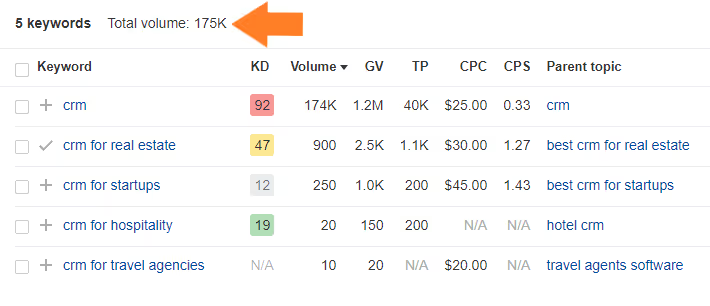

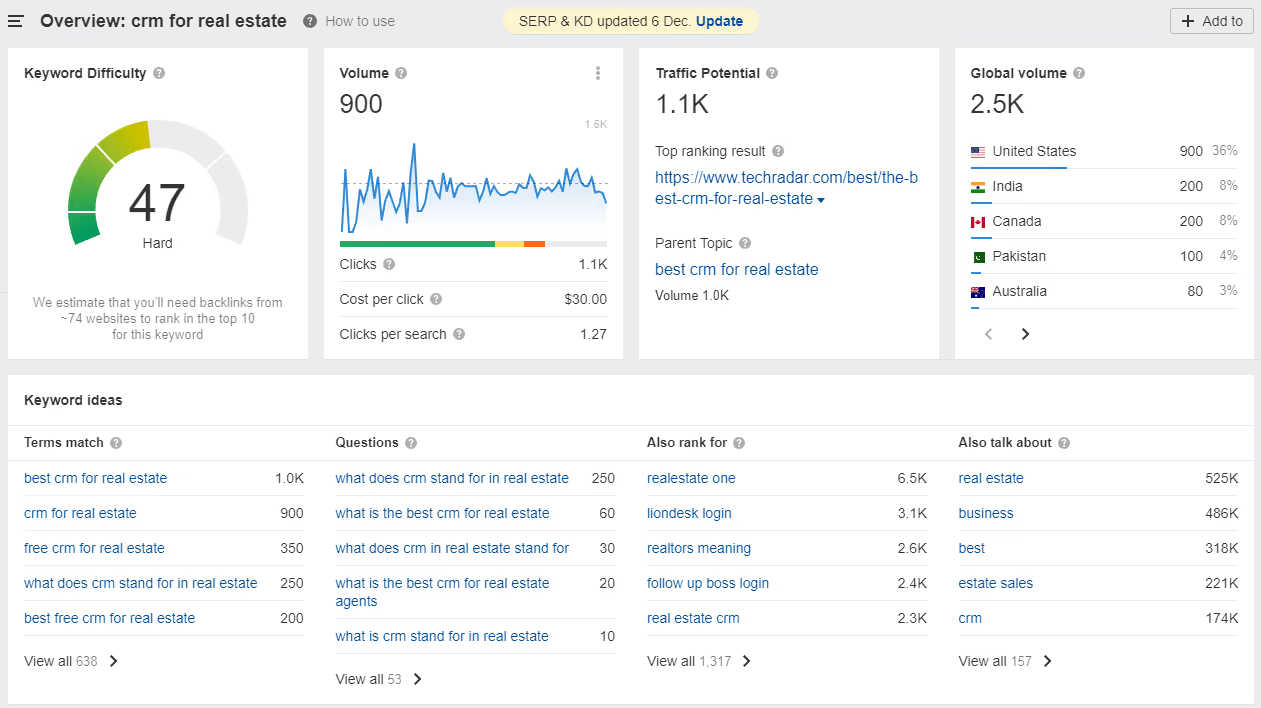
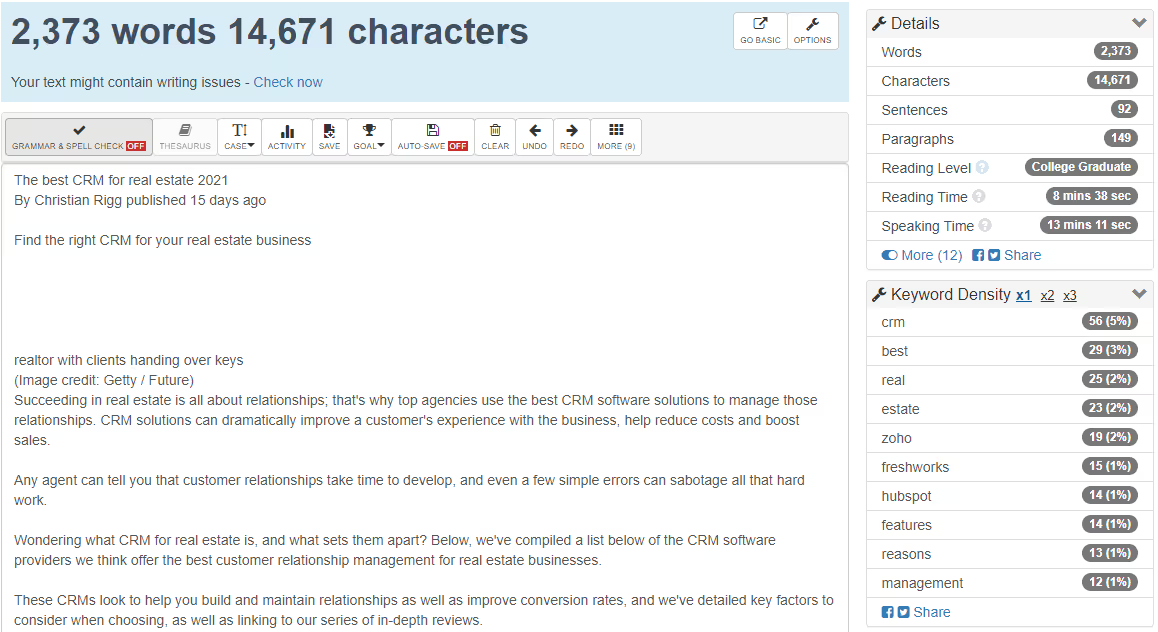
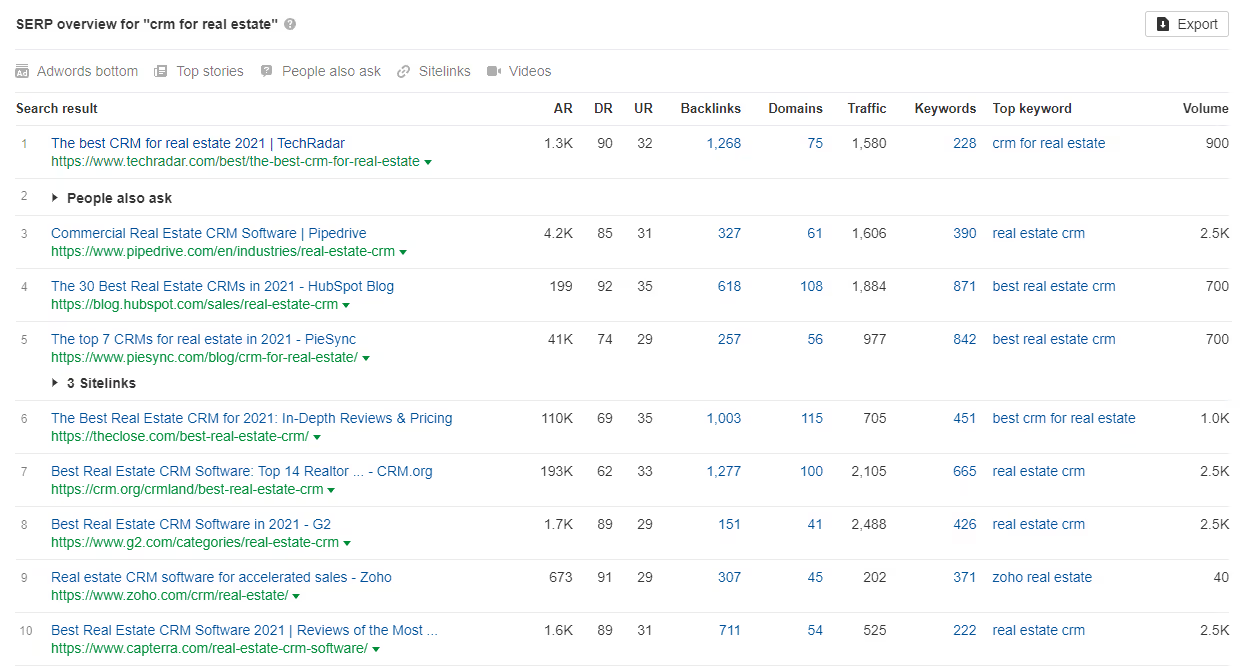
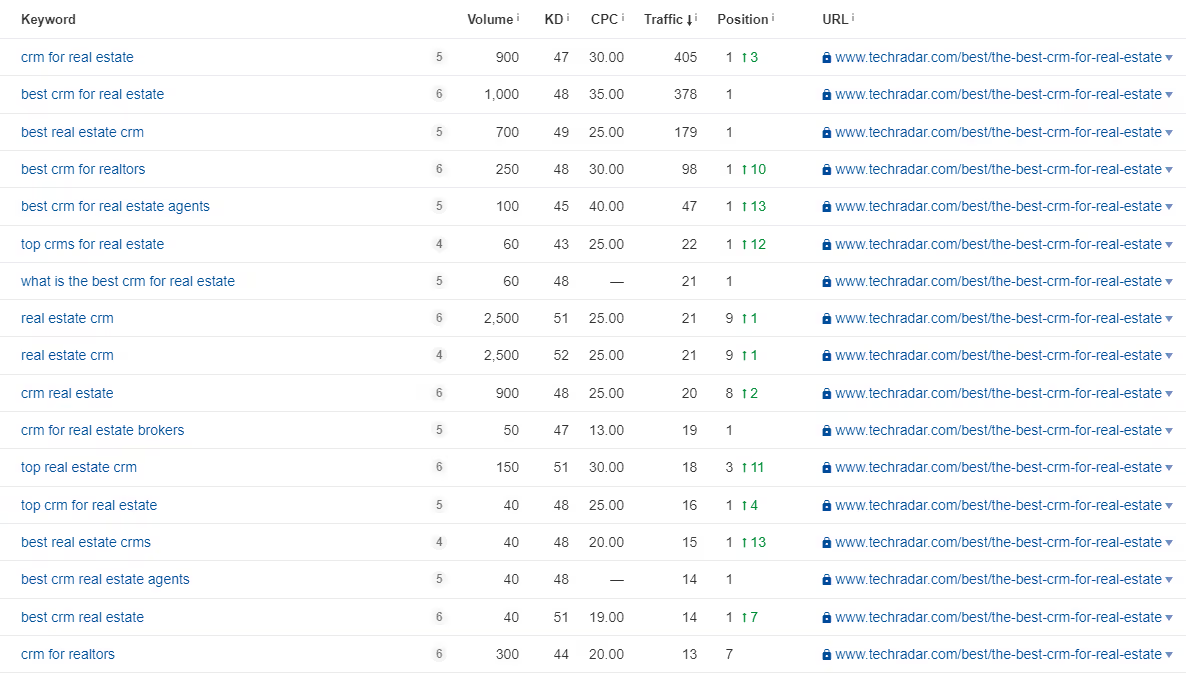
After you’ve compiled your data for all of the points mentioned above you want to make sure it’s as accurate as possible. Double-check all of the factors, such as your LTV, lead conversion rate, sales conversion rate, but mostly your production costs - as these can vary significantly and are harder to nail down.
It’s important to note that the production costs will just be estimates, and that’s fine! It’s very difficult to plan these things perfectly, this is to give you a solid range of expectations - but in our experience, our SEO ROI calculations tend to be pretty conservative, all things considered. The reason for this is that typically when you’re trying to target a specific content resource to a specific keyword, you will undoubtedly miss keywords that the content could rank for, and will rank for. Meaning you will actually under-estimate the total volume of visitors that your actions will yield.
This calculator mostly accounts for content creation and link building costs - however you should try to incorporate your costs for other actions taken with SEO - such as site improvements, and other factors. You also don’t only have to account for blog content and those types of long-form content - if you think that you can have a solutions page rank well for a set of keywords, include those in your lists as well (though the conversion rate from those pages will likely be higher than from other content pages on the site).
Note that this is a similar calculator that we use to project the SEO ROI of our prospective clients during our sales process, and follow up on this multiple times throughout a project to make sure the recommendations we're making for new link targets and content production will be valuable to our clients.
This is a lighter version of the calculator we use but customized so that you can input your costs, rather than the costs we've come to expect in our projects from our marketing inputs like content production and link building.
*It’s important to note that this SEO ROI calculator only calculates the cost and potential ROI of just the production costs for content and links using keywords and strategy that you’ve already determined - this does not include any costs for an agency base retainer, strategy work, technical audits, keyword research or content strategy. The calculator that we use during our sales planning accounts for all of our strategy and project management costs as well.
When you’ve finished your SEO ROI calculator you will receive a results list and email that explains the factors that we calculate and what kind of ROI you can generally expect to make from your SEO efforts, and it’s important to note that these are all estimates based on the metrics you provide and given our best ability to collate the information that we have gathered through our time doing this for our own clients.
If all of the actions you’ve totaled up in your production costs are accurate and allow you to rank in the top 5 positions for the keywords that you’ve selected and totaled up in your total volume estimate you should have a pretty accurate estimated SEO ROI with an accurate time to ROI and monthly/annual figure to look forward to!
If the actions you’ve totaled up don’t take place or don’t yield the desired result of top-5 rankings then of course you will likely not be making the full ROI readout that we’ve generated.
It’s important to note as mentioned above that if you take all of the actions to accurately predict this information and you perform all of these actions and have content ranking really well - it’s very possible that this ROI calculation will be an underestimate of what your true potential would be, as we’re simply unable through manual research to factor in all of the potential keywords that your content could rank for the traffic that those keyword rankings will generate.
Chapter 6
When you have a sense of how much of a return you can expect on your SEO investment, you can plan your budget accordingly to maintain profitability.

Whether you use your own SEO calculations or our provided calculator, taking the time to estimate your SEO costs places you on a solid financial footing for planning your SEO marketing spend.
The process of planning your SEO marketing investment can be broken down into 4 steps:
This last step helps you keep your SEO budget sustainable. When you have a sense on when to expect a return on your investment, you’re less prone to spending more than you can afford upfront.
When planning your SEO investment, it’s important to have a long-term perspective on the compounding value of SEO. As with an investment in savings accounts or stocks, the value of SEO compounds over time.
For example, if you produce and promote a piece of pillar content, the number of visitors who click on your link will increase over time. Gradually, this will push up your search engine ranking for that page. This in turn will promote clicks to other pages on your site linked to the page getting results. The success of one page sets off a chain reaction that helps other content.
As momentum gathers for more pages on your site, the cumulative effect helps increase the Domain Authority (or Domain Rating) of your site as a whole. This increases the value of new content on your site by lending your growing authority to any additional content you create.
In these ways and others, SEO is an investment that increases in value over time. Keep this in mind when calculating your SEO ROI and deciding how to allocate your budget.
Calculating your SEO ROI is a matter of estimating the total returns on your SEO campaigns and comparing them with your total costs. Returns and costs may be measured directly in terms of revenue. Revenue returns also may be measured indirectly in terms of SEO metrics such as traffic, backlinks and page rankings. When defining returns and costs, you may develop your own itemized lists of KPIs and costs which figure into your calculations, or you can use calculators like ours which allow you to use predetermined variables.
Taking the time to invest in this process will yield long-term results as the compound value of your SEO investment accumulates. By planning your SEO ROI, you gain valuable business insight into what type of measurable returns you can expect from your marketing investment, helping you focus on profitable SEO campaigns, avoid unprofitable ones and keep your budgeting sustainable. Plan your SEO ROI to maximize your long-term returns on your marketing investment.
It’s also important to emphasize that these are investments, and while you plan your initial costs around new content and link building efforts - those assets may bear fruit for years and years to come. This is the truly difficult part of calculating SEO ROI because there’s also a long-term element that you have to account for, which is where calculators generally fail. You may build content that ranks for a term for 5 years, commonly referred to as “evergreen content” giving you consistent monthly search volume without additional investment needed. Some content may only rank for a few months due to competitors copying your strategies, in which case you may need to build more links over time to keep your rankings intact. These are the ultimate difficulties in tracking long-term ROI of SEO, but using calculators like ours can help give you a projection over a period of time of what to expect from your SEO efforts.
SimpleTiger specializes in helping B2B SaaS companies get winning SEO results. We can help you plan your SEO ROI for profitable returns. Get started by scheduling a discovery call to discuss how we can help you achieve your SEO goals.

Sean is Chief Operating Officer at SimpleTiger, responsible for operations, process creation, team utilization and growth, as well as sometimes direct client consultation.
Schedule a Discovery Call and see how we've helped hundreds of SaaS companies grow!



